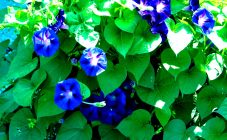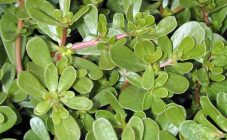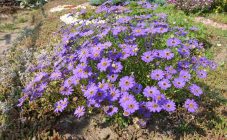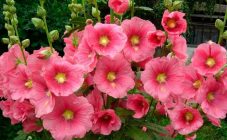Content:
Various exotic flowers from America, Africa, Asia, Australia are increasingly used as decorative crops in Russia. One of these flowers is perennial morning glory, cultivated locally as an annual. Most of its varieties are poorly adapted to the weather and climatic conditions of Russia. Therefore, it is necessary to cultivate them in accordance with special agrotechnical requirements that apply to planting and caring for morning glory in the open field.
Short description
The genus of perennial morning glory includes more than 500 representatives, among which there are shrubs, semi-shrubs and liana-like plants. There are also two edible representatives - water spinach and sweet potato. Only 25 varieties of morning glory are cultivated culturally.
Morning glory
The plant originated in the tropical regions of Latin America and is a nocturnal vine, the growth of which varies from 3 to 6 meters. Plants are heart-shaped. Three-toed leaves are located at the ends of the stems. They are combined with each other so firmly and tightly that moisture or sunlight cannot seep through them.
Flowers are bright white in color and reach up to 15 cm in diameter. They have a pleasant, rich aroma, similar to an almond scent. They open late in the evening, making a specific popping sound. The flower usually dies in the morning. The flowering process takes place from July until the beginning of frost. This variety of morning glory prefers soils that are rich in nutrients, but grows best on moist loams.
Ipomoea Nile
The plant is native to the Asian tropical regions and is a bindweed liana up to 3 meters long. Its stem is highly branched, and its foliage is characterized by an oval shape. The flowers, which reach a diameter of 10 cm, have a white-colored core, while the inflorescence itself comes in the following colors:
- purple;
- blue;
- red;
- blue;
- pink.
The opening of the bud occurs in the first morning hours, and by noon the flower has already died. Flowering begins in mid-July and ends in the second October decade.
Morning glory Kvamoklit
Also known as cypress liana, it is a tropical annual of extraordinary beauty. Its strong, twisting stems twine around the supports and grow up to 5 meters.
This variety, in turn, is represented by several subtypes. Most of them stand out for their bright red color and oblong vines.
Originally from southern Mexico. In central Russia, four of its types are grown:
- Slaughter's Quamoklite;
- Quamoklite is pinnate;
- Kvamoklite fiery red;
- Blade kvamoklite.
Morning glory of Cairo
This variety is widespread in the rainforests of Australia, Asia and Africa. Shoots grow up to 5 meters, flattened and curly, have a rounded shape. Flowers are 6 cm in diameter, grouped in several pieces, densely and in large numbers are placed on the stem. Their color is both white and multi-colored.
Plants bloom from July to September. After that, their tubers are usually removed from the ground and determined for wintering in a room with loosened soil.
Ipomoea purple
A large plant from the tropics of South America, growing up to 8 meters. The foliage is cordate, with oblong petioles. Shoots and leaves are covered with a small fluff. The flowers are arranged in clusters, 7 cm in diameter. Wild representatives have purple inflorescences, but in the course of breeding studies, purple, red and pink flowers were obtained.
The most common varieties:
- Scarlett O'Hara;
- Milky Way;
- Scarlet's Star;
- Grandpa Otts;
- Caprice.
Ipomoea ivy
The homeland of this species is the tropics of America. Shoots up to 3 meters long, which have trifoliate oblong leaves with denticles at the edges. The flowers are about 5 cm in diameter, they are red, burgundy, pink or blue. Flowering begins in mid-summer and lasts until the onset of frost. The most common variety is Roman Candy.
Ipomoea tricolor
This plant is also native to the American tropics. The stems are very branched, reaching up to 5 m in height. The foliage is large and wrinkled, placed on oblong petioles. The diameter of the flowers is 10 cm, they grow in groups of several pieces. When they bloom in the morning, their color is light blue with a whitish core, and in the evening, when they start to fade, the color changes to pinkish-purple.
In the course of selection, several varieties were obtained, of which the most popular are:
- Blue Star;
- Wedding bells;
- Summer sky;
- Sky blue.
Reproduction of morning glory
Perennial morning glory is capable of reproduction in the following ways:
- seeds - seeds bought in a garden store or collected by themselves are planted in the soil;
- cuttings - certain varieties of culture are propagated exclusively by this method;
- self-seeding - morning glory at the end of the season sheds seeds that germinate in the next growing season;
- seedlings - seeds are pre-germinated in the house and only then transplanted into open ground.
Perennial morning glory: planting and care
Preparing to disembark
The planting process of annual morning glory, like perennial, begins in mid-April. This plant is not resistant to low temperatures, therefore, in most of the territory of Russia, it is grown by seedlings. The collected seeds are stored for several years. First, they are placed in heated water for several days. Some seeds are very dense, so they are initially scarified by piercing with a needle, after which they are soaked until they swell.
Plants need a specific soil, the composition of which depends on the origin of the plant. So, for morning glory from Africa, soil is needed with the presence of crushed expanded clay in the composition. Instances of American origin require such a soil mixture, where the following components would be in an equivalent ratio:
- vermiculite;
- peat;
- coconut fiber.
Morning glory: growing seedlings
Plastic cups or small pots are filled with soil substrate and two prepared seeds are placed in them. They are buried a little deep into the soil, after which the cups are covered with film or glass to create greenhouse conditions. Plants in this state must be watered and ventilated in a timely manner, removing the accumulating condensate. Two weeks before the formation of seedlings, the seedlings are kept at a temperature of + 20 ° C, after which the shelter is removed from the glass.
When the seedling reaches 15 centimeters in length, a string is tied to it, fixing its second end at the top. The liana will climb up this lace.As the morning glory grows, it is transferred several (usually two) times into a new vessel with an increased capacity, not forgetting to simultaneously pinch the top.
Outdoor transplant
When the morning glory forms 4 full leaves, it is transplanted to a permanent place in the open ground. The plant reacts negatively to this procedure, therefore, when transplanting, it is necessary to keep a soil ball on the roots.
Bright, overly lit areas are unsuitable for growing morning glory. In such conditions, the flowering process of a plant, already short-lived, is even more reduced. Inflorescences shrivel, which negatively affects their decorative properties. It is also not recommended to choose overly shaded plots, in which the liana grows weaker, and the flowers practically do not bloom. Choose a semi-shaded place. If such a site was found near the building, care must be taken that rainwater from the roofs does not fall on the vines.
Ipomoea have rather thin vines that are capable of injury or breakdown under strong gusts of wind. Therefore, places with drafts are also not suitable for the cultivation of the plant in question.
Ipomoea is very thermophilic, so the average daily air temperature at the time of transplantation should be stable at about + 12 ° C. The soil on the site is fed with organic elements and dug up. A distance of at least 30 cm is left between the holes.The planted vines are sprinkled with loosened soil, and peat mulch is sprinkled on top with a layer 5 cm high.A lattice support is formed over the stems or a firmly stretched fishing line is placed, the lower end of which is fixed on a peg at the base of the plant.
Morning glory: plant care
Fertilizer for the plant in question is applied every two weeks. For this purpose, special feeding is used for flowering ornamental plantings or cacti. The dosage and concentration indicated on the package should be observed exactly. Exceeding these indicators will provoke an increased growth of the vegetative mass to the detriment of the inflorescences.
Nitrogen is introduced in the form of root dressings. Phosphate fertilizing is most often carried out as foliar, using a spray bottle. For the first time, these substances are added during planting, and then during the growing season.
At the onset of the flowering phase, the introduction of trace elements is recommended. At the same time, vines become lush, resistant to diseases and unfavorable environmental factors.
Why does morning glory not bloom
If flowering does not occur during the cultivation of morning glory, then most often this happens for three reasons:
- unsuitable soil;
- incorrectly selected site;
- lack of nutrients.
Protection against diseases and pests
The main physiological disease of morning glory is white edema. The plant is also affected by viruses and fungal diseases - rot, rust, etc.
The cause of the development of fungal diseases is stagnant water near the root system or affected soil. Appropriate fungicides are used against these diseases, but in case of severe damage, the plants have to be destroyed. Viral ailments cannot be treated, so the affected specimens have to be burned.
The main harmful insects on the plantations under consideration are spider mites and aphids. With timely detection, it is possible to limit ourselves to the usual treatment with soapy water. In especially advanced cases, the following drugs are introduced:
- Fitoverm;
- Karbofos;
- Actellic.
Morning glory in autumn
In the autumn, the plant retains its decorative properties due to the varied color of the leaves. To collect seeds from it, brown boxes are selected on the buds located below. When dry, they open very easily.
The seeds are dried and laid out in paper bags, on which the name of the variety is signed. Seed material retains its sowing properties for three years. It should be borne in mind that some varieties of morning glory (in sky blue, etc.), the seeds are poisonous.
When the foliage withers at the end of autumn, the shoots are removed from the supports and pruned. To know how to preserve morning glory until spring, you need to take into account that the roots are destroyed, and the tubers are determined for storage. The soil is carefully dug up. Next year, it is allowed to plant seeds again in the same area, but most often they sprout themselves. This is due to the fact that in the fall they fall asleep on the soil from the dried boxes.
Knowing the whole process of cultivation of perennial morning glory, you can grow this crop in the Moscow region, the Volga region, Siberia and other regions of the country. An exotic culture will adorn any garden or flower bed if it is looked after at the proper level.




















